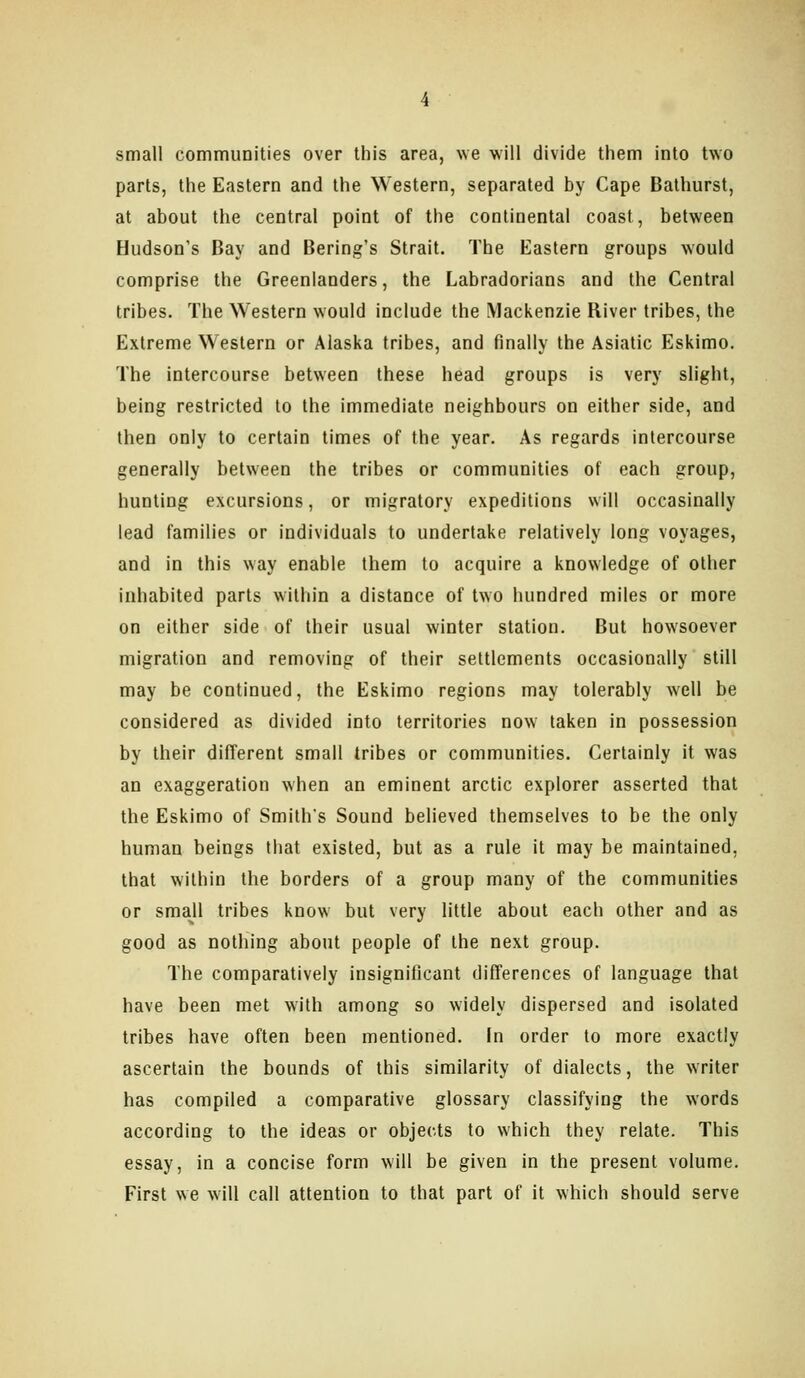
Full resolution (JPEG) - On this page / på denna sida - The origin of the Eskimo as traced by their language - Culture home

<< prev. page << föreg. sida << >> nästa sida >> next page >>
Below is the raw OCR text
from the above scanned image.
Do you see an error? Proofread the page now!
Här nedan syns maskintolkade texten från faksimilbilden ovan.
Ser du något fel? Korrekturläs sidan nu!
This page has been proofread at least once.
(diff)
(history)
Denna sida har korrekturlästs minst en gång.
(skillnad)
(historik)
small communities over this area, we will divide them into two
parts, the Eastern and the Western, separated by Cape Bathurst,
at about the central point of the continental coast, between
Hudson’s Bay and Bering’s Strait. The Eastern groups would
comprise the Greenlanders, the Labradorians and the Central
tribes. The Western would include the Mackenzie River tribes, the
Extreme Western or Alaska tribes, and finally the Asiatic Eskimo.
The intercourse between these head groups is very slight,
being restricted to the immediate neighbours on either side, and
then only to certain times of the year. As regards intercourse
generally between the tribes or communities of each group,
hunting excursions, or migratory expeditions will occasionally
lead families or individuals to undertake relatively long voyages,
and in this way enable them to acquire a knowledge of other
inhabited parts within a distance of two hundred miles or more
on either side of their usual winter station. But howsoever
migration and removing of their settlements occasionally still
may be continued, the Eskimo regions may tolerably well be
considered as divided into territories now taken in possession
by their different small tribes or communities. Certainly it was
an exaggeration when an eminent arctic explorer asserted that
the Eskimo of Smith’s Sound believed themselves to be the only
human beings that existed, but as a rule it may be maintained,
that within the borders of a group many of the communities
or small tribes know but very little about each other and as
good as nothing about people of the next group.
The comparatively insignificant differences of language that
have been met with among so widely dispersed and isolated
tribes have often been mentioned. In order to more exactly
ascertain the bounds of this similarity of dialects, the writer
has compiled a comparative glossary classifying the words
according to the ideas or objects to which they relate. This
essay, in a concise form will be given in the present volume.
First we will call attention to that part of it which should serve
<< prev. page << föreg. sida << >> nästa sida >> next page >>